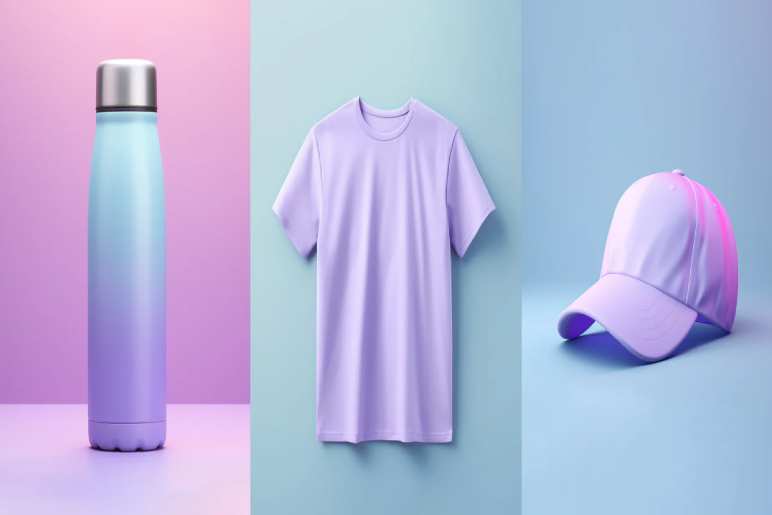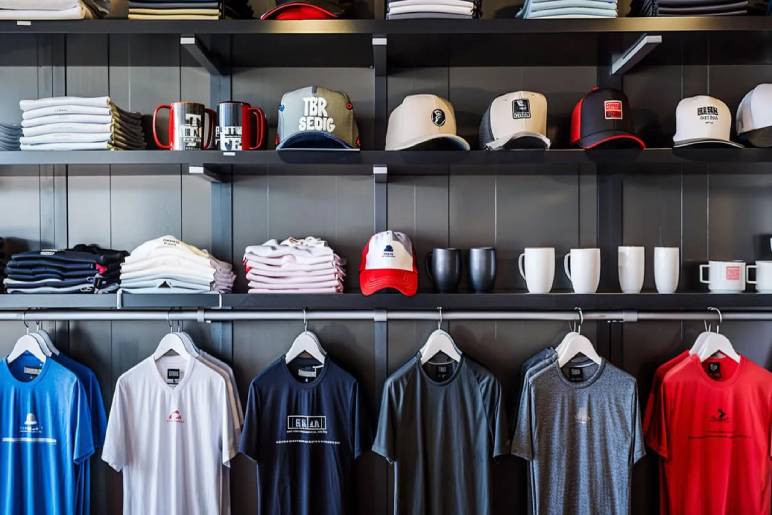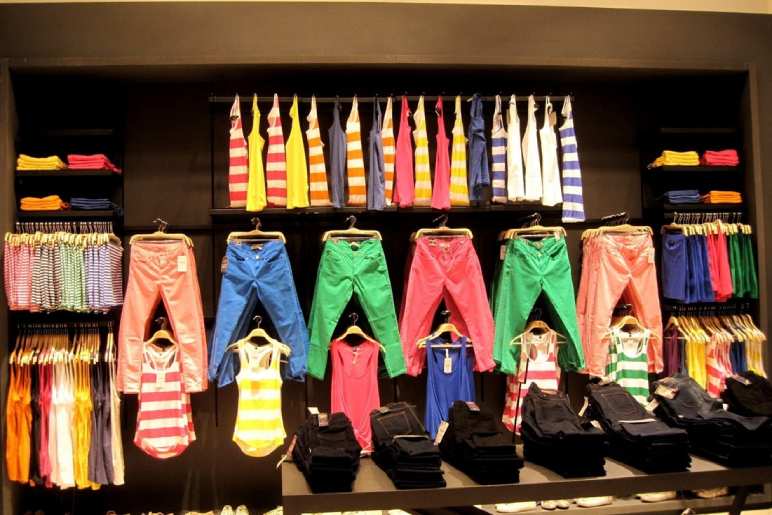Merchandise refers to the goods or products that are bought and sold in business. It’s the tangible items that fill store shelves, online shopping carts, and market stalls. From clothing and electronics to groceries and toys, merchandise encompasses a vast array of products.
The Etymology of “Merchandise”

The word “merchandise” has its roots deeply embedded in the history of trade and commerce. Let’s embark on a linguistic journey to uncover its origins.
Derived from the Old French word “marchandise,” it eventually found its way into the English language. The French term, in turn, can be traced back to the Germanic word “mark,” meaning “border” or “boundary.” This connection suggests that the early concept of merchandise was tied to goods exchanged at market borders or trading posts.
Over centuries, the word evolved to encompass a broader range of goods and services. Today, “merchandise” encompasses everything from everyday essentials to luxury items. While the word’s origins lie in the physical exchange of goods, its meaning has expanded to include digital products and services in the modern marketplace.
Types of Merchandise: Understanding Your Products

Merchandise is the backbone of any retail business, and understanding its different types is crucial for effective inventory management, marketing, and sales. Let’s explore some common classifications of merchandise:
Based on Consumer Behavior
- Staple or Basic Merchandise: These are essential products that consumers purchase regularly, such as milk, bread, or toothpaste. They form the core of a store’s offerings.
- Fashion Merchandise: This category includes clothing, accessories, and footwear that are influenced by trends and seasons. Fashion merchandise often has a shorter lifecycle compared to staples.
- Seasonal Merchandise: Products that are in demand during specific times of the year, like holiday decorations, swimwear, or winter apparel.
- Convenience Merchandise: Items purchased impulsively or for immediate needs, such as snacks, magazines, or batteries.
- Shopping Merchandise: Products that consumers compare before buying, such as electronics, appliances, or furniture.
- Specialty Merchandise: Unique or exclusive items that customers are willing to go out of their way to find, like designer brands or collectibles.
Based on Product Durability
- Durable Goods: Products with a long lifespan, requiring less frequent replacement, such as appliances, electronics, and furniture.
- Non-Durable Goods: Products consumed quickly or have a short lifespan, like food, beverages, and personal care items.
Based on Product Usage
- Consumer Goods: Products purchased for personal or household use.
- Industrial Goods: Products used in the production of other goods, such as raw materials and machinery.
The Importance of Merchandise

Merchandise is more than just products on shelves; it’s the lifeblood of any retail business. It’s the tangible representation of a brand and the driving force behind sales and revenue.
Merchandise drives sales: The right products, displayed effectively, can significantly impact a store’s sales performance. A well-curated merchandise mix attracts customers and encourages purchases.
Builds brand identity: Merchandise is a powerful tool for building and reinforcing a brand’s image. Consistent product offerings and visual merchandising can create a strong brand identity in the minds of consumers.
Enhances customer experience: A diverse and appealing product assortment enhances the overall shopping experience. It satisfies customer needs, encourages exploration, and fosters loyalty.
Generates revenue: Ultimately, merchandise is the source of revenue for any retail business. Effective merchandise planning and management are crucial for maximizing profitability.
Influences store traffic: A well-stocked store with desirable products attracts customers and drives foot traffic.
In today’s competitive retail landscape, merchandise plays a pivotal role in determining a business’s success. By understanding the importance of merchandise and implementing effective merchandising strategies, retailers can increase sales, build customer loyalty, and achieve long-term growth.
Examples of Merchandise

Merchandise encompasses a vast array of products, from everyday essentials to luxury items. Here are some examples across different categories:
Consumer Goods
- Food and Beverage: Grocery items, snacks, beverages, and prepared meals.
- Clothing and Accessories: Apparel, shoes, hats, jewelry, and handbags.
- Electronics: Smartphones, laptops, televisions, cameras, and audio equipment.
- Home Goods: Furniture, kitchenware, bedding, and home decor.
- Personal Care: Cosmetics, toiletries, skincare products, and hair care items.
Industrial Goods
- Raw Materials: Metals, minerals, timber, and agricultural products.
- Machinery and Equipment: Industrial machinery, tools, and heavy equipment.
- Components: Parts used in manufacturing processes.
Specialty Goods
- Luxury Goods: High-end fashion, jewelry, watches, and automobiles.
- Collectibles: Stamps, coins, art, and antiques.
- Sports Merchandise: Jerseys, team apparel, and sports equipment.
Digital Goods
- Software: Computer programs, mobile apps, and video games.
- Music and Movies: Digital downloads and streaming services.
- Ebooks and Audiobooks: Digital books and audiobooks.
These are just a few examples, and the list of merchandise possibilities is virtually endless. The specific types of merchandise offered by a business depend on its target market, industry, and business model.
Types of Merchandising Companies

Merchandising, at its core, is about effectively displaying and promoting products to entice consumers. The companies involved in this process can be categorized based on their role in the supply chain and their focus.
Primary Types of Merchandising Companies
- Retailers: These are the most familiar type of merchandising company. Retailers purchase products from wholesalers or manufacturers and sell them directly to consumers. Examples include department stores, grocery stores, electronics retailers, and fashion boutiques.
- Wholesalers: While they don’t typically interact directly with consumers, wholesalers play a crucial role in the merchandising process. They buy products in bulk from manufacturers and sell them to retailers.
- Manufacturers: While not always considered merchandising companies in the traditional sense, manufacturers often have merchandising departments to promote their products to wholesalers and retailers. They create marketing materials, provide sales support, and manage product displays.
Specialized Merchandising Roles
Beyond these primary categories, there are specialized merchandising roles:
- Visual Merchandisers: These professionals focus on creating aesthetically pleasing and impactful product displays in physical stores.
- Digital Merchandisers: With the rise of e-commerce, digital merchandisers optimize product placement and presentation on online platforms.
- Product Merchandisers: These individuals analyze product performance, identify trends, and make recommendations for product assortment and pricing.
Merchandising vs. Service Companies: What’s the Difference?

Merchandising and service companies are two distinct business models, each with its own characteristics and operations. While they both aim to generate profit, the fundamental difference lies in what they offer to customers.
Merchandising Companies
A merchandising company focuses on buying and selling tangible products. Their core business revolves around inventory management, product sourcing, and sales. Examples of merchandising companies include retail stores, online marketplaces, and wholesalers.
- Key characteristics:
- Deals with physical products
- Inventory management is crucial
- Focus on product sourcing and pricing
- Revenue generated through product sales
Service Companies
On the other hand, service companies offer intangible services to their customers. Their primary asset is human capital and expertise. Instead of selling products, they provide skills, knowledge, or assistance. Examples of service companies include consulting firms, law firms, and healthcare providers.
- Key characteristics:
- Offers intangible services
- Relies on human capital
- Focuses on customer relationships and satisfaction
- Revenue generated through service fees
Merchandising in 2024: A Dynamic Landscape

Merchandising in 2024 is a complex interplay of traditional retail strategies and cutting-edge digital innovations. As consumer behavior evolves, so too must the methods of showcasing and selling products.
The Blurring Lines Between Online and Offline
One of the most significant trends in merchandising is the seamless integration of online and offline experiences. Consumers expect consistency across channels, from product availability to pricing and promotions. This has led to the rise of omnichannel merchandising, where products are presented cohesively across physical stores and digital platforms.
Personalization and Data-Driven Decisions

Leveraging data to understand customer preferences and behaviors is paramount. Personalization is key to creating tailored shopping experiences. Retailers are utilizing data analytics to curate product assortments, optimize pricing, and deliver targeted recommendations.
Sustainability and Ethical Consumption
Consumers are increasingly conscious of environmental and social impacts. Sustainable merchandising involves sourcing products responsibly, reducing waste, and highlighting eco-friendly attributes. Transparency and ethical practices are becoming essential for building brand loyalty.
Experience Over Everything

Merchandising is no longer just about displaying products; it’s about creating immersive experiences. Interactive displays, storytelling through product placement, and incorporating technology like augmented reality can captivate customers and drive sales.
The Rise of Social Commerce
Social media platforms have become powerful sales channels. Merchandising on social media involves creating visually appealing content, leveraging influencers, and enabling direct purchases. This trend has opened up new opportunities for brands to reach a wider audience and drive conversions.
Conclusion

Merchandise forms the cornerstone of commerce, representing the tangible products that businesses offer to consumers. From essential staples to luxury items, the diversity of merchandise is vast. Understanding the different types of merchandise is essential for businesses to effectively cater to their target market and optimize their product offerings. By carefully selecting, managing, and presenting merchandise, businesses can drive sales, build customer loyalty, and achieve long-term success.
Read more:
- Blueface Net Worth, Lifestyle And Updates In 2024
- Alternatives to Payday Loans: Exploring Your Options
- Benefits of Selling Your Decommissioned Data Center Equipment
Featured Image source: https://tinyurl.com/mrxte84w

